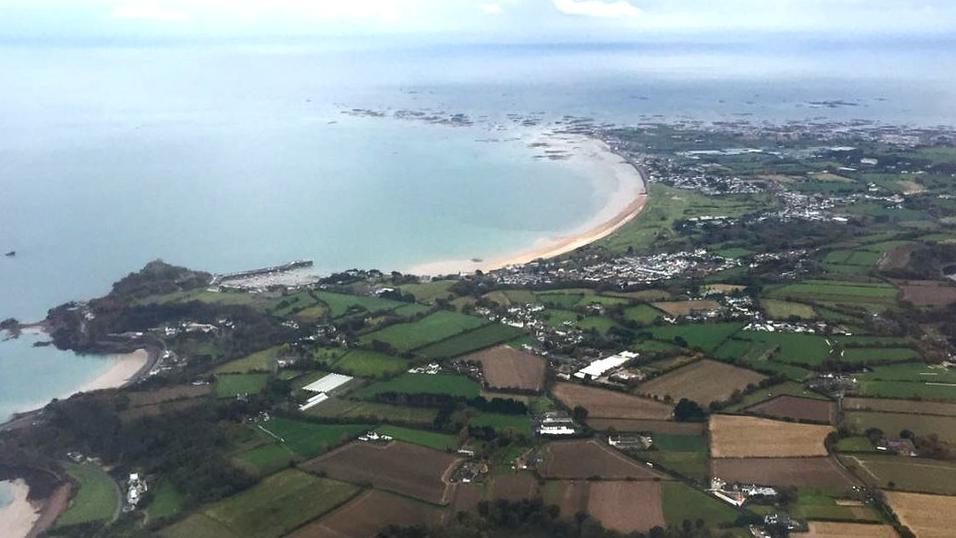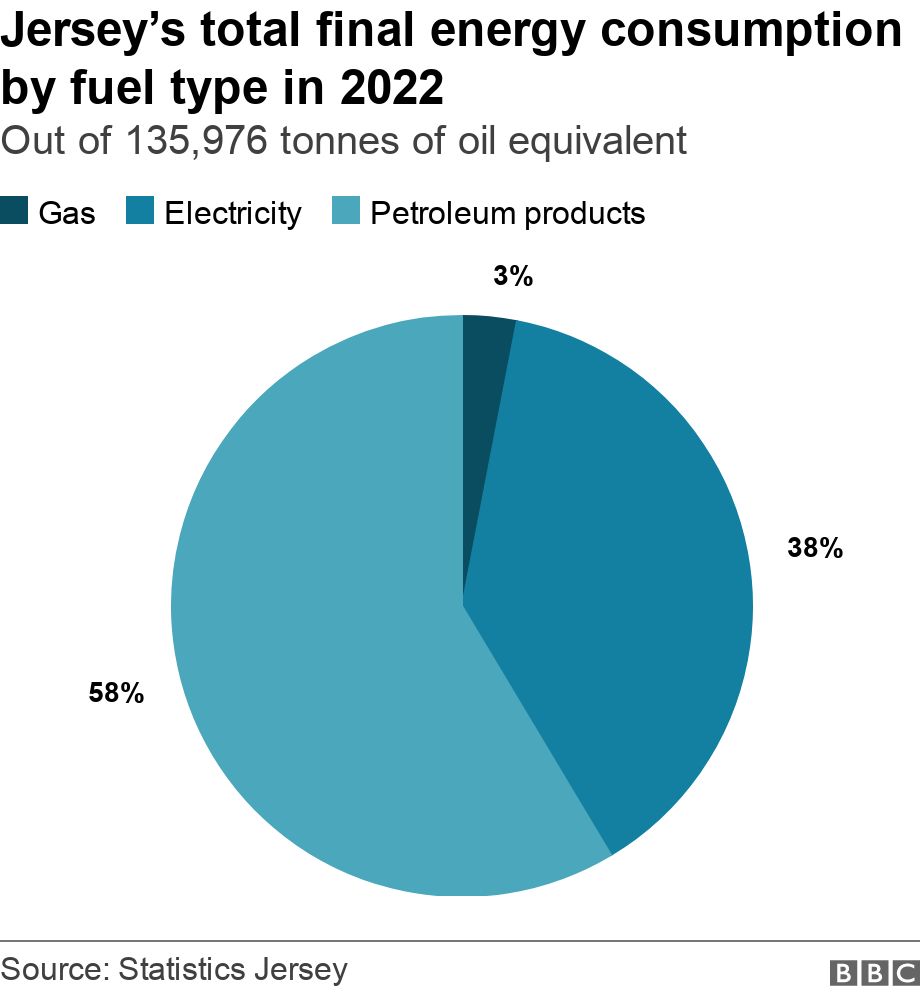Total energy consumption in Jersey down from 2021

The figure is down from 2021, new data released says
At a glance
The total energy consumption in Jersey is down on 2021, a new report says
The Jersey Energy Trends report was published by Statistics Jersey on Wednesday
It focuses on energy supply and use in 2022
- Published
The total energy consumption in Jersey was 5% less in 2022 than in 2021, a new report has found.
The Jersey Energy Trends report, external was published on Wednesday by Statistics Jersey.
It focused on energy supply and use in 2022, as well as presenting data for the last five calendar years.
Energy is supplied to Jersey predominantly through imports, as well as a small amount produced on the island.
Power supply
The report highlighted that almost all of Jersey's energy supply was imported, with about 2% was produced on the island.
This figure was generated by the Energy Recovery Facility, which burns rubbish and uses the heat from the fire to generate steam, and electricity solar panels.
Petroleum products accounted for about 60% of the island's energy supply, and electricity imports and on-island generation accounted for the remainder of 40%.
Jersey’s total primary energy supply (TPES) in 2022 - the total energy Jersey imported and produced from its own natural resources - was 6% less than in 2021.
The report said that TPES was just over 139,000 toe [tonne of oil equivalent], down from about 147,500 toe in 202.
A toe is a unit of energy which represents the quantity of energy released through burning one tonne of crude oil. One toe is equal to 11,630 kWh or 10 million kilocalories.
Energy use
The total final energy consumption, which included households, industry, government and transportation, was 5% less than in 2021, the report highlighted.
Of the total energy used, 38% was by households, 35% for transportation and 27% by industry and government.
Follow BBC Jersey on Twitter, external and Facebook, external. Send your story ideas to channel.islands@bbc.co.uk, external.
